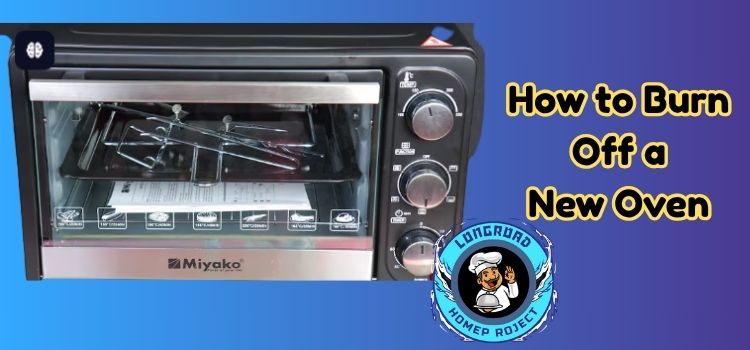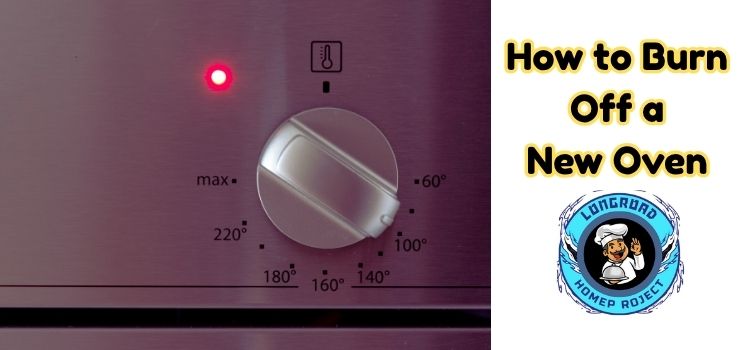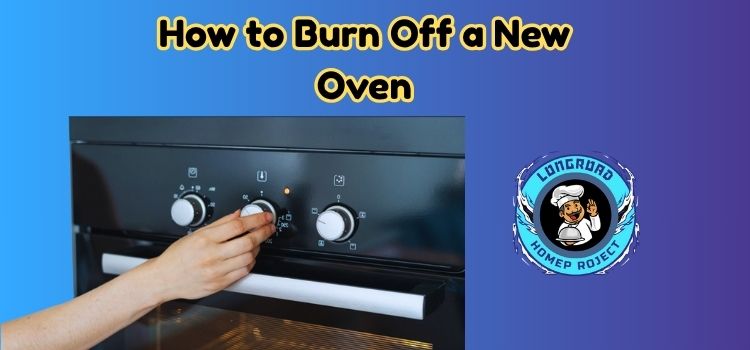As an Amazon Associate I earn from qualifying purchases.
Have you ever unboxed a brand-new oven, only to be greeted by a strange chemical smell or unexpected smoke during its first use? This phenomenon is common and often surprises many new appliance owners. Understanding how to burn off a new oven is crucial—not just for eliminating unpleasant odors but also for ensuring your meals taste as they should and for maintaining a safe cooking environment. In this guide, we’ll delve into the importance of this initial burn-off process, provide step-by-step instructions, and share tips to ensure your new oven starts off on the right foot.
What Is “Burning Off” a New Oven?
“Burning off” a new oven refers to the initial heating process that removes manufacturing residues such as oils, coatings, and other chemicals applied during production. These substances can emit odors or smoke when the oven is first used. By performing a burn-off, you ensure that these residues are eliminated, resulting in a cleaner cooking environment and preventing any unwanted flavors from affecting your food.
Why It’s Important in Real Life
- Health and Safety: Burning off removes potentially harmful chemicals that could emit fumes during cooking.
- Food Quality: Residual manufacturing substances can affect the taste and smell of your food.
- Appliance Longevity: Proper initial use can extend the life of your oven by preventing buildup and ensuring optimal performance.
- Peace of Mind: Knowing your oven is clean and safe allows you to cook with confidence.
Examples of How to Burn Off a New Oven
Gas Ovens
Gas ovens may emit a strong odor during the first use due to the combustion of manufacturing residues. It’s essential to ventilate the area well during the burn-off process.
Electric Ovens
Electric ovens might produce smoke as protective coatings on heating elements burn away. This is normal and should dissipate after the initial burn-off.
Convection or Fan Ovens
These ovens circulate air, which can spread odors more rapidly. A thorough burn-off ensures that all internal components are free from manufacturing residues.

Table Comparison
| Oven Type | Residue Emission | Recommended Burn-Off Temp | Benefit |
| Gas Oven | High | 500°F (260°C) | Removes gas and chemical odors |
| Electric Oven | Moderate | 400–500°F (204–260°C) | Clears coatings, improves heating |
| Convection Oven | Moderate-High | 450–500°F (232–260°C) | Cleans fan, vents, and cavity |
How It Works
Preparation
- Remove all packaging materials, zip ties, and protective films from the oven.
- Take out oven racks and accessories.
Cleaning
- Wipe down the interior surfaces with warm, soapy water to remove dust and debris.
- Dry thoroughly with a soft cloth.
Ventilation
- Open windows and turn on exhaust fans to ensure proper airflow during the burn-off.
Initial Burn-Off
- Set the oven to 400–500°F (204–260°C).
- Allow it to run empty for 30–60 minutes.
- If your oven has a self-cleaning cycle, consult the manual before using it for the burn-off.
Cooling Down
- Turn off the oven and let it cool with the door open.
- Once cooled, wipe down the interior again to remove any remaining residues.

Benefits of Burning Off a New Oven
- Eliminates manufacturing chemicals and residues.
- Prevents unpleasant odors during initial cooking.
- Ensures food tastes as intended.
- Reduces smoke and potential fire hazards.
- Promotes even cooking by removing obstructions.
- Extends the lifespan of the appliance.
- Provides a safer cooking environment.
Common Mistakes to Avoid
- Skipping the Manual: Always read the manufacturer’s instructions for specific burn-off procedures.
- Leaving Packaging Inside: Ensure all plastic, foam, and ties are removed before heating.
- Poor Ventilation: Failing to ventilate can lead to smoke buildup and lingering odors.
- Not Cleaning Before Burn-Off: Residual dust or debris can burn and cause smoke.
- Using the Oven Immediately: Wait until the oven has cooled and been wiped down before cooking.
Bonus Tips or Pro Advice
- Repeat if Necessary: If odors persist after the first burn-off, repeat the process.
- Use Natural Deodorizers: Place a bowl of water with lemon slices in the oven and heat at 250°F (121°C) for 30 minutes to neutralize odors.
- Check for Updates: Some modern ovens have QR codes linking to instructional videos or updates—utilize these resources.
- Document the Process: Taking photos during the burn-off can be helpful for warranty claims or troubleshooting.
Real-Life Story
“When I first used my new oven without burning it off, my roast chicken had a strange chemical taste, and the kitchen filled with smoke. After researching, I performed the burn-off process, and the difference was night and day. Now, every meal comes out perfectly, and there’s no lingering odor. I wish I had known about this step earlier!”

Frequently Asked Questions (FAQs)
Q1: What are the benefits of burning off a new oven?
A: Burning off removes harmful manufacturing residues, ensuring your food tastes as intended and reducing the risk of smoke or unpleasant odors during initial use.
Q2: Is burning off a new oven suitable for beginners?
A: Absolutely. The process is straightforward and requires no special tools—just follow the step-by-step guide provided.
Q3: What are common challenges during the burn-off process?
A: Common issues include smoke and odors. Proper ventilation and following the recommended temperature and time guidelines can mitigate these challenges.
Q4: Is it safe to cook in the oven immediately after the burn-off?
A: Yes, once the oven has cooled and you’ve wiped down the interior to remove any remaining residues, it’s safe to begin cooking.
Q5: How quickly can someone see results after burning off a new oven?
A: The benefits are immediate. Post burn-off, you should notice the absence of chemical smells, and your food will taste as expected.
Conclusion –
Understanding how to burn off a new oven is a crucial step in ensuring the safety and quality of your cooking experience. By taking the time to perform this simple process, you protect your health, enhance the flavor of your meals, and extend the life of your appliance. Don’t overlook this essential step—your taste buds and your oven will thank you.
As an Amazon Associate I earn from qualifying purchases.